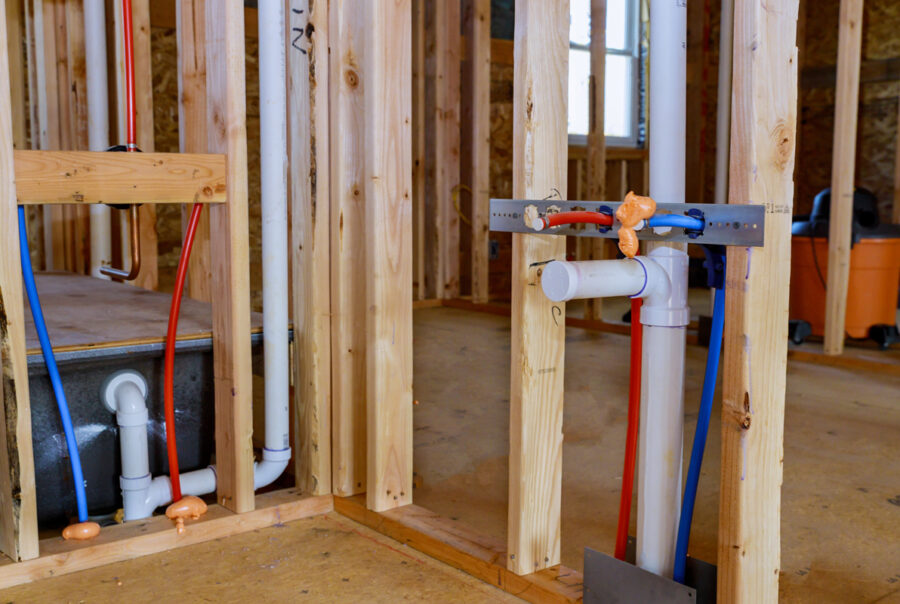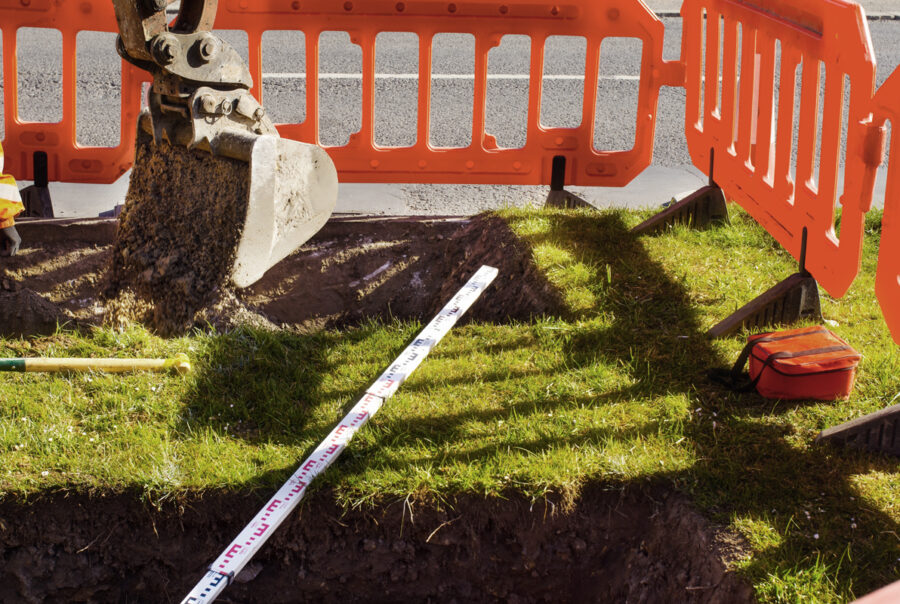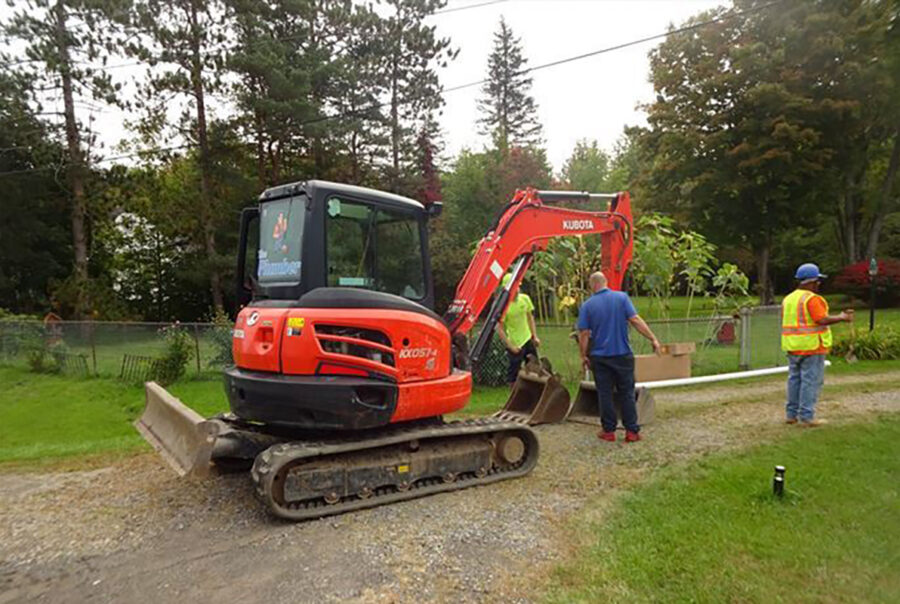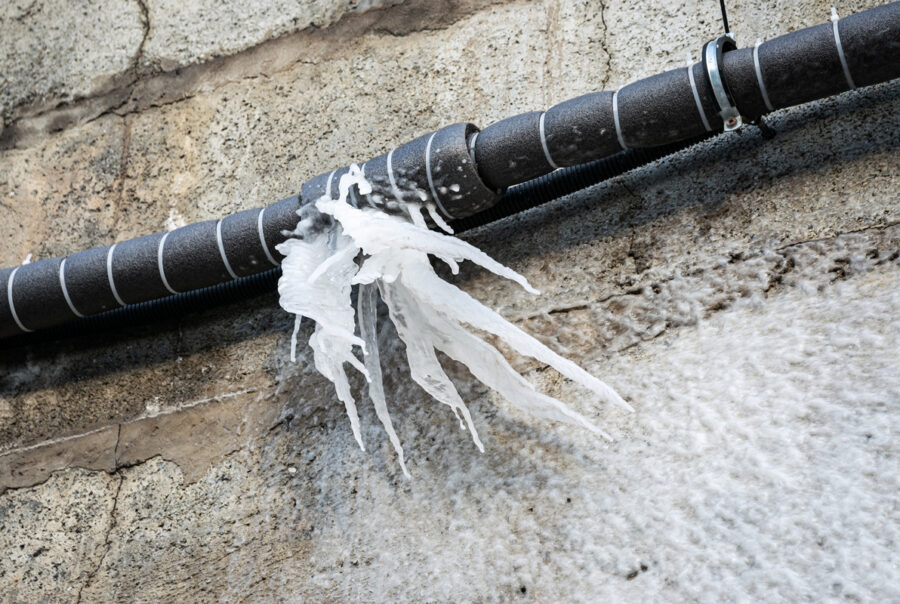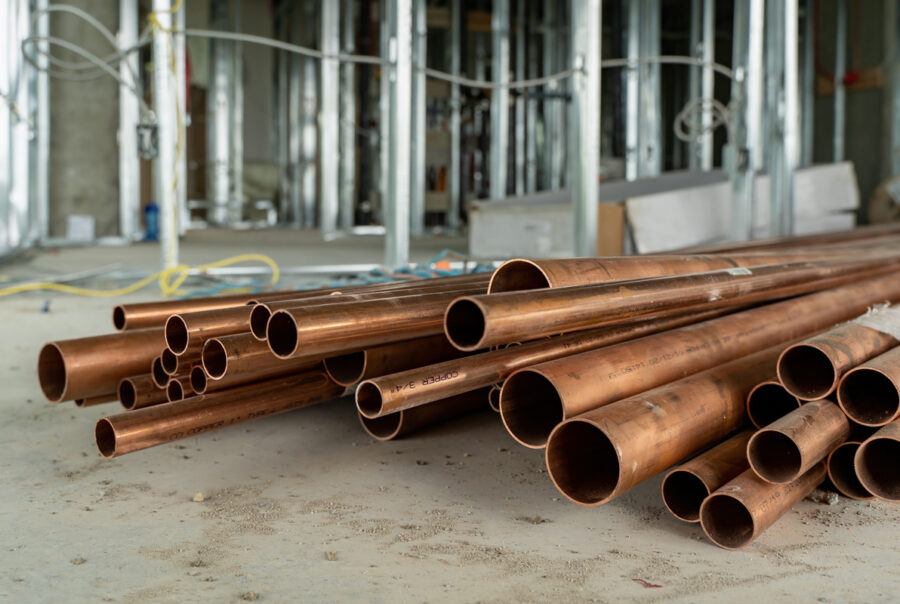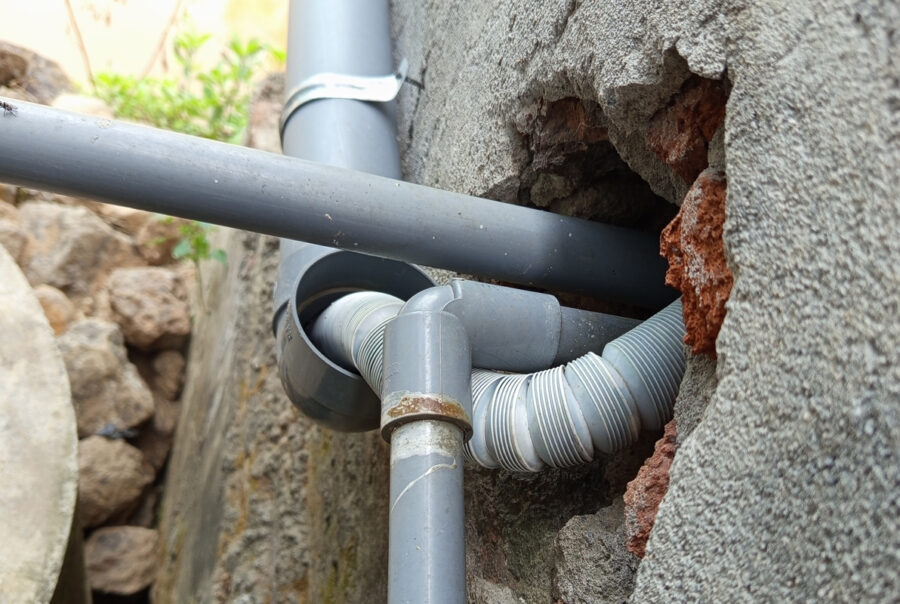Plumbing
This playbook is your go-to resource for understanding the unique coverage needs of plumbing contractors — from everyday installation and repair risks to specialized protections that support water, gas, and drainage system operations.
The following playbook is intended to provide guidance on Merchants’ appetite and most desired risk characteristics. Your Merchants team is available to speak about the entirety of a risk that may have characteristics not exactly fitting our desirability.
We also encourage you to refer to Merchants Appetite Guide under the Resources/Tools menu of the Commercial Gateway in Merchants agent portal website for class-specific eligibility.
Description of Operations
Plumbers install, service, repair, and replace piping and fixtures that connect to water mains or wells, appliances, gas utilities, irrigation systems, sewers, and sprinkler systems. Work includes cleaning out obstructions that may disrupt the delivery of the water or gas supply or prevent the removal of waste materials. Plumbers may offer services to the general public, or specialize in residential or commercial work, new construction, or remodeling. Plumbing operations involve cutting metal or plastic (PVC) piping to length and assembling it by means of threaded couplings, adhesives, or by soldering, brazing or welding. Pipes may be located in ceilings, behind walls, under floors, or underground. The contractor may offer 24-hour emergency service.
Merchants Appetite
The following risk characteristics are intended to provide guidance on Merchants’ appetite. Your Merchants team is available to speak about the entirety of a risk that may have characteristics not exactly fitting our desirability. Refer to Merchants Appetite Guide under the Resources/Tools menu of the Commercial Gateway on merchantsgroup.com for class-specific eligibility.
Desirable Risks
- Small to large artisan contracting operations
- Revenues up to $6,000,000
- Favorable loss history
- Experience in current trade (new ventures are eligible)
- Subcontracted work at 40% or less with proper risk transfer in place
- Retail receipts at 50% or less
- Residential snow plowing (other than apartments and condos) of 1-4 family single structure dwellings
- Commercial snow plowing of single occupant commercial buildings (max 35 parking spaces)
Ineligible
- Commercial General Contractors
- Industrial, institutional or municipal work
- Underground work in excess of 12 feet
- Exterior work in excess of 4 stories above ground (3 stories in NY)
- Roofing operations (other than incidental work up to 35% of roof surface)
- Street, road, bridge, airport runway, racetrack, or garage parking deck construction or repair
- High voltage work performed on power lines in excess of 220 volts
- Plowing of high traffic areas (ex – strip plazas, shopping centers, big box stores, religious institutions, medical centers, apartment complexes)
Exposures
Understand the key risks contractors face in the field — and how each trade’s exposures can impact insurance coverage, potential claims, and safe day-to-day operations.
Automobile Exposure
Automobile exposures include the transportation of workers, equipment and materials to and from job sites. If there is work at heights, vehicles may carry scaffolding, lifts, and similar equipment that require special tie-down procedures. There may be transportation of hazardous waste to approved landfills. All drivers must be well trained and have valid licenses for the type of vehicle being driven. MVRs must be run on a regular basis. Random drug and alcohol testing should be conducted. Vehicles must be well maintained with records kept in a central location. Drivers may need a hazardous materials (“hazmat”) endorsement to transport some waste and old insulating materials removed from structures.
Completed Operations Liability Exposure
Completed operations liability exposures can occur from faulty workmanship or improper installation if the plumbing or piping is not properly installed, resulting in leaks or water damage. Bacteria from leaking sewage connections can cause illness, as well as substantial property damage from hidden mold and fungus. In larger jobs, such as sprinkler installation, accidental discharge or the failure of the system to operate properly represents a potentially catastrophic exposure from water damage or fire. If the plumber installs natural gas household appliances, poor connections can result in carbon monoxide poisoning or an explosion.
Crime Exposure
Crime exposure are from employee dishonesty, including theft of customers’ goods by the contractor’s employee. Background checks, including criminal history, should be performed on all employees handling money. There must be a separation of duties between persons handling deposits and disbursements and reconciling bank statements. If customers pay the plumber at the job site, receipts should be provided. Plumbing materials that include copper or brass can be targeted by thieves.
Inland Marine Exposure
Inland marine exposures include contractors’ equipment, which comprise employees’ tools, and equipment that may be rented, leased or borrowed from others for specific jobs. Goods in transit exposures include supplies (adhesives, caulking, welding tanks) and materials to be installed. Hazards in transit exposures include collision, shifting of goods during transport, and oversized loads. Improper loading or inadequate tie down increases the potential. Equipment at a job site can be damaged by drops from heights, weather damage, or by vehicles. Equipment and supplies left at job sites are subject to theft and vandalism.
Premises Liability Exposure
Premises liability exposures at the contractor’s shop or office are generally limited due to lack of public access. If there are retail sales, the exposure increases as customers may slip, trip or fall. Outdoor storage may present vandalism and attractive nuisance hazards. Off-premises exposures are extensive. The area of operation should be restricted by barriers and proper signage to protect the public from slips and falls over tools, power cords, building materials, and scrap. Plumbing work can be invasive as access to pipes may require removing a section of wall or flooring. There may be a high potential for property damage when removing old plumbing and piping and installing new. Welding presents potential for burns or setting the property of others on fire if not conducted safely. In enclosed structures, the buildup of fumes from adhesives or sewer gases can result in bodily injury. Personal injury exposures include assault and battery and invasion of privacy. Background checks should be conducted for any employee who will have regular contact with customers. The use of subcontractors as well as any contractual liability exposures should be examined.
Property Exposure
Property exposures may be limited to an office and storage yard for equipment and supplies or include shop operations or retail sales. If the contractor constructs their own piping on premises, the potential for fire or explosion increases due to sparks and flames produced by the welding process, which involves the use of tanks of gases that must be stored and handled properly. There should be basic controls such as chained storage of the tanks in a cool area and the separation of welding operations away from combustibles, either in a separate room or with flash/welding curtains. PVC piping may release toxic fumes should a fire occur. Plastic piping typically uses adhesives that contain a flammable solvent. Handling and storage of flammables need good controls. If repair work on vehicles and equipment is done in the building, fire hazards may be much higher due to flammables such as lubricants, oils, and degreasers. Plumbing materials that include copper or brass can be targeted by thieves. If these are stored on premises, appropriate security controls should be taken including alarms, lighting, and physical barriers prohibiting access after-hours.
Workers Compensation Exposure
Workers compensation exposures vary based on the size and nature of the job. Cuts, scrapes, puncture wounds, or amputations from cutting tools may occur. Any injury that breaks the skin may become infected from contaminated materials or sewage. Back injuries, hernias, strains, sprains can result from lifting and working from awkward positions such as in confined spaces. Burns from welding operations can occur both at the yard site and job site. Welding should be conducted in well-ventilated areas to reduce the exposure to injury from fire, fumes, and vapors which can cause eye, skin, and lung irritations. If the contractor does any excavation to connect to utilities or to install sprinklers and irrigation systems, bodily injury can result from digging and trenching. Additional sources of injury include electric shock, foreign objects in the eye, hearing impairment from noise, repetitive motion injuries, temperature extremes, and auto accidents during transportation to and from job sites. When work is done on ladders and scaffolds, there is a potential for severe injury or death from falling, being struck by falling objects, or adverse weather conditions. The danger is reduced if there is good maintenance of scaffolds and other equipment, proper use of protective equipment, and strict enforcement of safety practices. There is occupational disease potential from inhaling asbestos, lead, mold, raw sewage, rodent or bird droppings, or other contaminants.
Risk-Smart Plumbing Contractors
Click each photo to see what makes it best-in-class — and how these features help minimize risk and reduce exposures on job sites and contractor-owned properties.
Red Flags in the Field
Click each photo to learn what’s not-so-great — and how these conditions can increase risk, raise exposures, or lead to costly claims on contractor job sites or properties.
Automatic Coverages
These built-in coverages come standard with our contractor policies, offering added protection for income, tools, equipment, property, and more — all at no additional cost.
Not all coverages may be available in all states and limits may vary by state. For specific details, please refer to the appropriate Merchants form, which can be found in the Company Forms Library on Merchants website.
Annual Aggregate Limit Per Location
This policy conditions amends the General Aggregate Limit to apply separately to each location owned by or rented to the insured.
Contractors Equipment – Employee Tools and Clothing
Under the Contractors Equipment form, coverage for employee tools and equipment are included for up to $5,000 per occurrence, but not more than $1,000 per employee. The occurrence limit may be increased. Coverage is subject to a $500 deductible.
Contractors Equipment – Fuel, Accessories and Spare Parts
Under the Contractors Equipment form, coverage for fuel, accessories and spare parts are included for up to $10,000 per occurrence. The limit may be increased and is subject to a $500 deductible.
Contractors Equipment – Trailers and Contents
Under the Contractors Equipment form, coverage for loss or damage to owned, leased or rented office and construction trailers and their contents that is caused by or resulting from a covered cause of loss is included for up to $25,000. This additional coverage does not include coverage for contractors tools. The trailer and contents limit can be increased and is subject to a $500 deductible.
Damage to Premises Rented to You (Fire Legal Liability)
Business Liability coverage for damage because of property damage to a premises while rented to the insured or temporarily occupied by the insured with permission of the owner is provided at a limit of $500,000 unless a higher limit of insurance is shown in the policy declarations.
Employment Practices Liability
Provides coverage on a claims made basis for injuries to employees due to demotion, wrongful termination, wrongful denial of opportunities, including wrongful hiring and supervision, retaliatory actions, coercion, harassment and other types of work-related discrimination, libel, humiliation and similar acts.
Equipment Leased or Rented from Others
Coverage for contractors equipment the insured owns but leases or rents from others for which the insured is legally liable in a written agreement is covered if damaged by a covered cause of loss. The limit for this extension is $50,000. A $500 deductible applies. Higher limits are available.
Installation Coverage
Coverage for direct physical loss or damage by a covered cause of loss applies to fixtures, supplies, materials and equipment that are on the jobsite, in storage or in transit in order to be installed. The following limits apply:
- Property at jobsite $10,000
- Property at temporary storage location $5,000
- Property in transit $5,000
- All covered property included above combined in any one occurrence is $20,000
Primary & Non-Contributory - Other Insurance Condition
This insurance is primary and will not seek contribution form any other insurance available to an additional insured under the policy provided that the additional insured is a Named Insured under such other insurance and the insured has agreed in writing in a contract or agreement that this insurance would be primary and would not seek contribution from any other insurance available to the additional insured.
Rental Reimbursement
Under the Contractors Equipment form, coverage for actual rental expenses for renting equipment are included for up to $10,000 per occurrence, but not more than $500 per day. A 72 hour waiting period applies. The per occurrence limit can be increased.
Unscheduled Tools and Equipment
Coverage for direct physical loss, caused by a covered cause of loss, to contractors unscheduled tools and equipment owned by the insured or in the insured’s care, custody or control is provided at a limit of $3,000. A $500 deductible applies. Higher limits are available.
Voluntary Property Damage
Voluntary Property Damage coverage is provided for unintentional property damage to the property of others caused by the insured or while the property is in the insured’s possession and the damage is arising out of the operations described in the policy. The coverage limit is $10,000 per occurrence/$25,000 aggregate with a $500 per claim deductible.
Waiver of Subrogation
Waiver of rights of recovery is waived against any person or organization, when the insured has agreed in writing in a contract, agreement or permit that was executed prior to the bodily injury, property damage, or personal injury and advertising injury.
Helpful Resources
Navigate to “Merchants On-Demand” from the homepage of your Merchants agent portal website to access flyers for your reference, as well as flyers you can distribute to clients.

